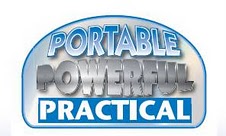Signs of Heat Stress in
Animals
Even with proper cooling,
shade, and water available, owners should still be aware of the signs of
heat stress and monitor animals during high temperature days. The
following are signs to watch for and actions to take to avoid loss due to
heat stress and heat stroke in animals:
STAGE 1:
• Elevated Breathing Rate
• Restlessness
• Increased Time Standing
STAGE 2:
• Elevated Breathing Rate
• Restlessness
• Slight Drooling
• Animals may group
together
• Increased Time Standing
STAGE 3:
• Elevated Breathing Rate
• Restlessness
• Slight Drooling or
Foaming
• Animals may group
together
• Increased Time Standing
STAGE 4:
• Elevated Breathing Rate
• Open Mouth Breathing
• Restlessness
• Slight Drooling or
Foaming
• Most Animals Standing
in Pen
STAGE 5:
• Open Mouth Breathing
and Tongue Protruding
• Most Animals Standing
in Pen, Restless
STAGE 6:
• Open Mouth Breathing
and Tongue Protruding
• Labored Breathing,
Respiration Rate May Decrease
• Cattle Push from Flanks
while Breathing
• Head Down
• Individual Animals May
Isolate from Herd
Actions for Avoiding Heat
Stress
ACTION:
• Ventilate area with
Port-A-Cool® units or KÜÜL® pads cooling systems
• Provide Portable or
Permanent shaded areas near feeding areas
• Utilize all actions
from Stage 1
• Provide plenty of cool,
clean water
• If temp is over 18˚C
consider initiation of measures to prevent heat stress
• A rule of thumb for
initiating heat stress management is provided by the THI or
Temperature Humidity
Index as follows:
– Livestock alert is
24-25 ˚C
– Livestock danger is
26-28 ˚C
– Livestock emergency is
29+ ˚C
If animals show signs of
heat stress in stage 5 or 6, all a veteranarian or seek medical help.
Actions are listed for
consideration only. Please consult a vet or other professional for
specific instructions on the breed of animal owned.
Professional
Recommendations
The University of
Arkansas Division of Agriculture
recommends portable shaded areas with fans along with clean,
cool water to help avoid heat stress in dairy cows.
They specifically
recommend temperature reduction in holding pens using fans,
circulating air and to be sure the area is properly ventilated.
The Department of
Agriculture and Biosystems Engineering
recommends the following to protect livestock and poultry from heat
strees and heat stroke during summer:
• Increase ventilation
rate and turn on cooling fans where applicable.
• Use evaporative cooling
pads and systems where applicable (they state that moving
air accelerates the cooling process in animals.)
• Monitor animals for
signs of heat stress.
Port-A-Cool® evaporative
cooling units are perfect for achieving all these
recommendations using natural evaporative cooling.



No comments:
Post a Comment